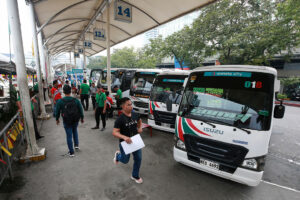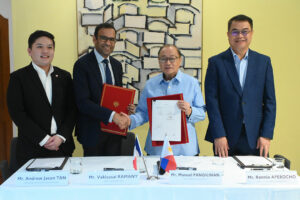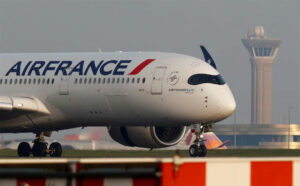Rethinking jeepney modernization

The government vows to proceed — even at a slower pace — with its long-standing plan to modernize public utility vehicles, particularly jeepneys, to ensure they are roadworthy and up to standard. The plan requires drivers and operators to organize themselves into cooperatives or corporations to qualify for new route franchises.
This move comes even as the Supreme Court has yet to decide on the petition filed by transport operators against the jeepney modernization program. At the center of the case is the required “consolidation” of operators. Drivers and operators argue that this process, if implemented now, will leave many routes unserved.
To date, the Land Transportation Franchising and Regulatory Board (LTFRB) continues to rationalize jeepney routes nationwide. These route plans will determine how many vehicles each route needs and who can get a franchise. Authorities say they aim to rationalize half of the routes by the end of 2025, with the remainder to be completed by the end of 2026.
The process is slow and tedious. It requires the Department of Transportation and the LTFRB — both operating with limited resources — to coordinate with local government units (LGU) nationwide. Together, they must identify viable routes and determine how many vehicles are needed for each.
Only after these new routes are established can the government award franchises. From there, cooperatives and corporations will have around two years to acquire modern vehicles that meet updated standards. All in all, it may take another four years before the public sees new jeepneys on the road.
In the meantime, several key issues remain unresolved. These include how cooperatives can raise enough capital to buy new units; how they can build operational capacity to maintain their fleets; and how they can fairly compensate, train and manage drivers.
In my opinion, the present-day jeepney is an outdated mode of transportation. It was born out of necessity after World War II, when surplus military jeeps were repurposed for mass transit. Eight decades later, that same basic design still dominates our roads as the most common form of public transport.
It is also a fact that small, less-capitalized operators can’t afford to replace their old vehicles, even if they form cooperatives. To be blunt, even after pooling resources, they still lack the capital to build a modern fleet. This, to me, is the crux of the issue.
The high cost of modern jeepneys becomes a “barrier to entry” that excludes poorer operators and favors wealthier ones. As a result, consolidation risks becoming a backdoor for larger corporations to monopolize the jeepney industry under the guise of modernization.
That said, I also believe that any group involved in delivering a vital public service should be financially sound enough to ensure that the service they provide is comfortable, efficient, safe and dignified. The public deserves nothing less, and the government should not settle for anything less.
Commuters deserve a modern, professionalized jeepney industry — one in which drivers earn decent salaries, operators pay the proper taxes and fees and profits are reinvested to improve services.
To achieve this, Congress should consider devolving certain powers to LGUs. There may be a way to empower local governments to take a more direct role in modernizing public transport in their own territories.
Currently, LGUs are already involved in planning local routes, with the LTFRB coordinating and issuing franchises. One idea is to allow LGUs to issue franchises for jeepneys operating exclusively within their jurisdictions — much like they already do with tricycles. The National Government would retain oversight and ensure inter-LGU coordination.
The aim is to make public transport more inclusive, efficient and responsive to the needs of local communities. In this context, we can imagine a tiered system: larger jeepneys or minibuses with LTFRB-issued franchises running inter-city routes along national roads, while smaller, electric jeepneys operate shorter, purely local routes within an LGU.
Local routes make particular sense for electric shuttles, which often have limited range. These routes should still be coordinated with the LTFRB but franchised locally — again, similar to how tricycles are regulated.
Under current law, LGUs have control over tricycle franchises, while jeepney and bus routes fall under the LTFRB. This one-size-fits-all system struggles to meet the diverse needs of cities and municipalities across the country. It creates the impression that centralized planning contributes to unnecessary bureaucratic delays.
We should redefine the LTFRB’s role — from micromanaging routes to enforcing standards. The LTFRB should become the national regulator and standard-setter, responsible for fare guidelines, vehicle specifications and safety regulations. Local route planning can be devolved to LGUs, who understand their own traffic flows and community needs.
This shift can begin as a pilot covering small, electric jeepneys for short-distance routes as supplements to the larger, national routes. LGUs can design and manage these local routes, subject to national standards and approval timelines set by the LTFRB.
The LTFRB would still ensure consistency and facilitate coordination across LGUs, but it would no longer dictate every route detail. This would free up central planners to focus on system-wide integration and allow LGUs to adapt faster to local changes — new roads, new neighborhoods or shifts in commuter demand.
An important part of this system is the establishment of “handoff points” or shared terminals at LGU borders. These would allow passengers to switch from local shuttles to inter-city transport modes. The network would remain interoperable and user-friendly, guided by national standards but managed locally.
In this model, LTFRB becomes a mediator and integrator. It sets unified national standards — for fares, payment systems and vehicle specs — and helps broker inter-LGU agreements. Together with agencies like the MMDA, it ensures seamless travel. A commuter could take a Makati-managed jeepney to the city border and easily transfer to a Quezon City-bound bus or rail line at a designated terminal.
Many LGUs already operate local shuttle services to and from city borders. While these programs remain limited in scope, they prove that cities can run effective transit systems that attract riders and reduce congestion. However, current law prohibits LGUs from operating fare-collecting transport routes. This needs to change.
One option is for the LTFRB to grant franchises to LGUs themselves, allowing them to operate local routes. These LGUs can then sub-franchise smaller routes to local cooperatives. In this scenario, the LGU maintains oversight and ensures service quality.
An LGU could choose to operate the system directly or contract local cooperatives to run day-to-day operations. If cooperatives are involved, LGUs can assist with financing — either by purchasing units outright or leasing them to operators. This addresses the capital shortfall among small operators. Cooperatives would function purely as operators, receiving a share of revenue rather than owning the vehicles.
It may seem like a long shot, but with proper planning and legislation, this approach can work. Congress must consider how to evolve the LTFRB’s role and how to legally empower LGUs to establish local routes and issue franchises — or to hold franchises themselves and contract operators.
Modernizing the jeepney industry is not just about replacing vehicles. It is about building a transport system that works — for commuters, for drivers and for cities. LGUs are closer to the ground and better positioned to lead this transformation. But they need the legal authority to act.
Marvin Tort is a former managing editor of BusinessWorld, and a former chairman of the Philippine Press Council




